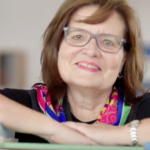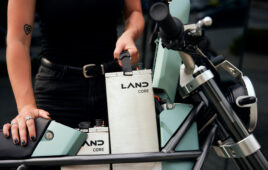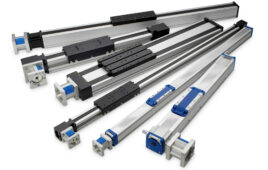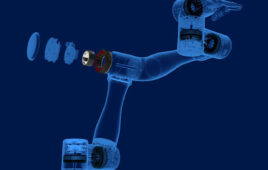This article is part of Design World’s Women in Engineering series.
Kristen (Robinson) Wegielewski is a CAPA Quality Engineer and Team Lead at Philips Healthcare at their operations in the Seattle area. For the uninitiated, CAPA stands for corrective action and preventive action — an approach for monitoring and improving organizational processes to eliminate anomalies and mistakes. That’s particularly important in the engineering and manufacture of healthcare products — including automatic external defibrillators (AEDs) and other devices that Philips makes.

Kristen (Robinson) Wegielewski
Wegielewski’s CAPA efforts at Philips initially focused on working with CAPA owners on root-cause investigations of product, process, and business issues … and familiarizing team members with root-cause methods when needed. Other work related to both internal and external audits.
Even as CAPA team lead though, a role she assumed this year, Wegielewski maintains her stand for quality systems and doing the right thing for the business — encouraging others to embrace investigations that beyond technical troubleshooting. She also continues efforts to improve her company’s CAPA system through identification of true root causes of issues and the generation of lasting solutions. In her new role, Wegielewski supports her company’s growing number of CAPA engineers — and prioritizes process consistency (so vital to quality initiatives) even while ensuring her team members get heard and encouragement to grow professionally.
When asked about what first drew her to engineering, Wegielewski said, “I don’t remember what first grabbed my attention … but I was always good in math and the sciences — and I always gravitated to mechanically based skills and hobbies.”
She clearly remembers the decision to become an engineer, though: “I knew in high school that I wanted to make a difference with my talent in math and science. I debated heavily between becoming a teacher or entering industry to be an engineer. I decided to take the engineering route — and I’ve fulfilled my desire to mentor and teach in both my career and other facets,” said Wegielewski.
Wegielewski does not cite any influential engineers as having shaped her decision to pursue the field and emphasizes personal drive (over organized programs) to boost the numbers of young women in engineering. More important than any particular program or effort, “You have to have the desire within to sustain,” underscored Wegielewski.
When asked about barriers (if any) women face in today’s engineering space, Wegielewski’s response was similar to those of others. She had this to say: “I believe that one barrier women face is knowing how to strike that fine balance between being heard and yet not being perceived as being a person grasping for attention. I think many women are respectful in discussions and allow others to speak before them … although that can potentially allow others to pass in front of them for growth opportunities.”
When asked to give an example of a design project well done, Wegielewski cited a time she was brought into a new product introduction (NPI) — after the product had gone past its development-plan due date. “I helped to clean up some of the design work. I also improved the design to be more cost effective — yet more customer-focused for the application of our product. In addition, I designed, accounted for use cases from the field, and coordinated with the manufacturer of our product’s carrying case for an improved offering … and drove the path of truly considering our customers.”
As with many other women we surveyed, Wegielewski has found the technical aspects of engineering challenges satisfyingly addressable with hard work and systematic approaches to resolution. It’s the non-engineering tests of life that prove harder to settle. “My biggest challenge has been a personal one that has arisen multiple times in my life — that of self-doubt.

In fact, I am proud of my experience and that I can call myself an engineer. Even so, it can be hard to overcome the occasional internal voice saying, ‘you aren’t good enough or smart enough to continue to excel.’ So I’ve allowed myself to momentarily be down on myself — but then I call to mind how my mentors would handle this situation — and I draw on my own past successes — and then remember that I am good enough.”
As for her leadership style, Wegielewski said her leadership skills stem from a desire to instruct. “I naturally mentor and coach people — and I grow when I do so. In fact, in my free time I am a motorcycle safety instructor, and I’ve learned a lot of the different learning styles from people who have come through my classroom. I am able to apply techniques from that venue to work and vice versa to encourage growth in people in both places. I believe in inspiring by being a part of the team — not being a dictator.”
When asked what career advice she would give to her younger self, Wegielewski said: “Believe in yourself and allow yourself to have not-so-perfect moments. You will recover, people will forget, and you will be stronger after. Do what you can to keep that drive alive.”

You may also like:
Filed Under: Engineering Diversity & Inclusion, Trends









